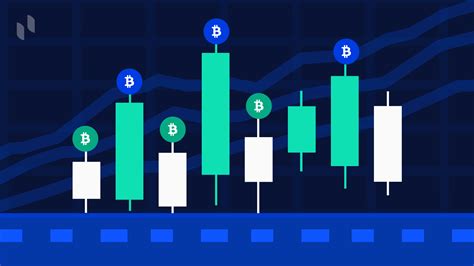Forex scalping is one of the most popular trading strategies for those seeking quick profits in the fast-paced world of forex markets. To play forex scalp effectively, traders must rely on a combination of speed, precision, and a thorough understanding of market trends. Unlike other forms of trading, scalping involves making numerous small trades within a short period, often on daily charts, to capitalize on tiny price movements. Whether you're new to scalping or looking to refine your technique, it's crucial to know the tools, strategies, and market conditions that make this approach successful.
Getting Started with Forex Scalping
Forex scalping offers a fast-paced, exciting way to trade, capitalizing on small price movements. To play forex scalp successfully, you need the right tools, strategies, and mindset. Before diving in, it’s important to get familiar with the basics of scalping and how to manage quick trades efficiently.
1. Understanding Forex Scalping
What is Forex Scalping?Scalping in forex refers to making quick, short trades that last anywhere from a few seconds to a few minutes. Traders look to capture small price movements, often relying on highly liquid pairs like EUR/USD, GBP/USD, or USD/JPY.
How Forex Scalping Differs from Other StrategiesScalping contrasts with day trading and swing trading because of its emphasis on rapid entry and exit. In day trading, positions may last hours, while in scalping, each position typically lasts a few minutes. Scalpers use shorter timeframes like 1-minute or 5-minute charts to execute trades.
Key Benefits of Scalping
Frequent trades: Traders can capitalize on multiple opportunities each day.
Small risk per trade: Scalpers typically take small profits, meaning their risk per trade is minimal.
Market independence: Scalpers can operate in both trending and sideways markets.
Challenges of Scalping
High transaction costs: Frequent trades often lead to higher commissions and spreads.
Emotional stress: The fast-paced nature requires intense focus and emotional control.
Limited time for analysis: Decisions must be made quickly, leaving little room for deep analysis.
2. Key Tools Needed for Forex Scalping
For effective scalp forex trading, having the right tools is essential. These tools help you execute trades swiftly and analyze the market.
<1. Trading Platform Selection> A reliable trading platform like MetaTrader 5, TradingView, or cTrader is crucial for scalpers. These platforms offer quick execution, advanced charting, and access to the major currency pairs.
<2. Technical Indicators for Scalping>
Moving Average: Helps identify trend direction and smoothing out price data.
RSI: Measures the strength of price movements and signals overbought or oversold conditions.
Bollinger Bands: Identifies volatility and potential price breakouts.

3. Choosing the Right Timeframes for Scalping
Selecting the optimal timeframes is one of the first steps to becoming a successful scalper.
1-Minute Chart: Ideal for scalpers who want to react to rapid changes in price.
5-Minute Chart: Offers a balance between speed and market analysis, allowing for more reliable trade setups.
15-Minute Chart: Suitable for slightly slower scalping strategies or traders who prefer a bit more time for each trade decision.
4. Risk Management in Scalping
Managing risk in forex scalping is essential to protect profits and minimize losses.
Setting Stop Losses and Take ProfitsUse stop-loss orders to limit potential losses and take-profit orders to lock in gains at predefined levels.
Position Sizing
Micro Lots: Begin with small lot sizes to limit risk exposure.
Calculating Lot Size: Use tools like position sizing calculators to adjust your lot size based on risk tolerance.
Risk-to-Reward RatioA favorable risk-to-reward ratio helps ensure that your potential gains outweigh your potential losses, even if you have more losing trades than winning ones.
Drawdown ManagementKeep a close eye on drawdown, the peak-to-trough decline in your trading account. This helps maintain discipline during losing streaks.
Limiting Trade FrequencyAvoid overtrading. Set a daily limit on how many trades you’ll execute to prevent emotional decisions.
Essential Tools and Indicators for Scalping
To play forex scalp successfully, you need a robust set of tools and indicators that can help you navigate fast-paced markets. Scalping relies heavily on accurate, quick data to execute small but consistent trades.
1. Trading Platforms for Scalping
MetaTrader 4 & 5
These platforms are among the most popular for forex scalping, providing fast execution and advanced charting tools.
MetaTrader 4 is more focused on simplicity and compatibility with a wide range of brokers, while MetaTrader 5 offers more advanced features like improved charting and better order execution capabilities.
cTrader
Known for its speed and clean interface, cTrader is another excellent platform for scalpers. It has advanced order types and fast execution times, making it ideal for quick trades.
TradingView
A versatile charting tool that also integrates with various brokers, TradingView offers real-time market analysis with user-friendly charting features and a wide selection of indicators.
2. Key Technical Indicators for Scalping
Technical indicators are essential to scalping, as they help identify short-term entry and exit points.
Moving Averages
A Moving Average (MA) smooths out price data over a set period, helping you spot the trend direction. Commonly used MAs include the 50-period and 200-period moving averages.
RSI (Relative Strength Index)
The RSI measures the strength of a currency pair’s price movement. A value above 70 indicates overbought conditions, while below 30 signals oversold, helping scalpers identify potential price reversals.
Bollinger Bands
Bollinger Bands consist of a moving average and two standard deviations, indicating volatility. Scalpers use these bands to anticipate breakouts or price retracements when the price hits the upper or lower bands.
Most Commonly Used Technical Indicators for Scalping
| Indicator | Purpose | Best Timeframe | Typical Usage |
|---|---|---|---|
| Moving Average | Identifies market trends | 1-minute, 5-minute | Spot trends and entry points |
| RSI | Measures market momentum | 1-minute, 5-minute | Identifies overbought/oversold levels |
| Bollinger Bands | Analyzes price volatility | 5-minute, 15-minute | Recognizes breakout potential |
| Stochastic Oscillator | Identifies potential price reversals | 1-minute, 5-minute | Detects oversold/overbought levels |
| MACD | Analyzes trend strength and momentum | 1-minute, 5-minute | Spot trend reversals and crossovers |
3. Timeframes for Scalping
Selecting the right timeframes is crucial for scalping. Shorter timeframes provide more opportunities, but also demand faster decision-making.
1-Minute Chart
The 1-minute chart is the fastest timeframe used by scalpers, perfect for quick market movements and capturing small price changes.
5-Minute Chart
A 5-minute chart gives you slightly more time to evaluate trades. It’s the sweet spot for many scalpers looking for quick entries and exits without the noise of a 1-minute chart.
15-Minute Chart
Although 15-minute charts are slower, they help identify potential trades with a bit more clarity, suitable for those who want a bit more time to analyze their setups.
4. Risk Management Tools for Scalping
Risk management is vital when scalping, as you’ll make numerous small trades. Protecting your capital with proper risk strategies is essential for long-term success.
Stop Loss Orders
Scalpers often use tight stop loss orders to limit potential losses. Setting a tight stop loss minimizes risk per trade.
Take Profit Orders
Setting take profit orders ensures that you lock in profits once your price target is reached. This also prevents you from overtrading or letting emotions interfere.
Position Sizing
Scalpers typically trade small position sizes to manage risk effectively. For instance, trading in micro lots minimizes the potential loss per trade.
Risk/Reward Ratio
A typical risk/reward ratio for scalpers is 1:1 or 1:2. This means for every dollar risked, scalpers aim to make at least a dollar or two in profit.
Drawdown Management
Keeping track of your drawdown is crucial for maintaining discipline. Scalpers should ensure their losses don’t exceed a certain percentage of their capital during losing streaks.

Risk Management in Forex Scalping
Effective risk management is essential for any forex scalper looking to succeed. In scalping, where trades are quick and profit margins are small, managing risk properly can mean the difference between success and failure.
1. Stop Loss and Take Profit Orders
<step 1> Set Stop Loss: A Stop Loss order limits the loss on a trade by automatically closing the position when the price moves against you by a predefined amount. This is crucial in scalping since the market moves quickly.
<step 2> Set Take Profit: Likewise, a Take Profit order locks in your profits once your target price is reached. This prevents you from holding onto a position too long and risking reversal.
Using both ensures that your losses are contained, and your profits are secured, maintaining a balanced risk/reward ratio.
2. Position Sizing and Capital Allocation
Proper position sizing is essential in managing risk. Scalpers typically use smaller lot sizes to mitigate potential losses from quick price fluctuations. Here's how to determine position size:
Calculate Capital Allocation: Typically, no more than 1% of your trading capital should be risked on a single trade. This means if your capital is $10,000, you would risk no more than $100 per trade.
Lot Size Calculation: To calculate your position size, consider the stop loss distance and pip value of the currency pair you're trading. A typical calculation formula is:
3. Risk/Reward Ratio for Scalping
A solid Risk/Reward Ratio helps you assess if a trade is worth taking. For scalpers, a common risk/reward ratio is 1:1 or 1:2, meaning the potential reward should be equal to or twice the amount of the risk. For example, if you’re willing to risk 10 pips, you should aim to make 10 or 20 pips in return.
Example Risk/Reward Scenarios for Scalping
| Risk (Pips) | Reward (Pips) | Risk/Reward Ratio | Capital at Risk |
|---|---|---|---|
| 10 | 10 | 1:1 | $100 |
| 10 | 20 | 1:2 | $100 |
| 5 | 10 | 1:2 | $50 |
4. Drawdown Management in Scalping
Drawdown refers to the percentage loss from your peak capital. In scalping, it’s vital to keep your drawdown under control to preserve capital. If your account experiences a drawdown of 10%, stop trading and reassess your strategy. To prevent large drawdowns:
Reduce Position Size: If you're facing a losing streak, reduce the size of your positions to minimize further losses.
Avoid Overtrading: Taking too many trades increases the risk of large losses. Stick to your trading plan and wait for high-probability setups.
Scalping Strategies and Techniques
Scalping in the forex market requires precision, speed, and a solid set of strategies to capitalize on small price movements. Understanding these strategies can significantly improve your chances of success.
1. Breakout Scalping Strategy
The Breakout strategy focuses on entering a trade as the price breaks through a support or resistance level. This technique is effective in volatile market conditions, where price movement is swift.
<step 1> Identify Key Levels: Use technical indicators like Bollinger Bands or Fibonacci Retracement to spot potential support and resistance levels.
<step 2> Wait for Confirmation: A breakout occurs when the price moves beyond these levels, confirming a new trend.
<step 3> Enter the Market: Place a market order as soon as the breakout is confirmed.
<step 4> Set a Tight Stop Loss: Protect your capital by placing a stop loss just below the breakout point for long trades (or above for short trades).
2. Moving Average Crossovers
The Moving Average Crossover strategy is widely used by scalpers due to its simplicity. It involves two moving averages: one with a short period and one with a longer period.
Signal to Buy: When the short-period Moving Average crosses above the long-period Moving Average.
Signal to Sell: When the short-period Moving Average crosses below the long-period Moving Average.
The 5-minute and 15-minute timeframes are commonly used for this strategy in scalping.
3. RSI Scalping Strategy
The Relative Strength Index (RSI) is an excellent tool for identifying overbought or oversold conditions in the market. The typical RSI range is 0-100, with values over 70 indicating overbought conditions, and values under 30 indicating oversold conditions.
Buy Signal: When the RSI falls below 30 and then crosses back above this level.
Sell Signal: When the RSI rises above 70 and then crosses back below this level.
RSI Scalping Example
| Signal | RSI Value | Action | Currency Pair | Timeframe |
|---|---|---|---|---|
| Buy | 29 | Enter Buy Order | EUR/USD | 5-minute |
| Sell | 72 | Enter Sell Order | GBP/USD | 5-minute |
| Buy | 28 | Enter Buy Order | USD/JPY | 15-minute |
| Sell | 73 | Enter Sell Order | EUR/GBP | 5-minute |
This strategy is effective when combined with support and resistance levels for confirmation.
4. The 1-Minute Scalping Strategy
For those who prefer quick, high-frequency trading, the 1-minute scalping strategy can be highly profitable. Traders using this method enter and exit trades within 1-minute candles, aiming for small profits.
Key to Success: Speed is critical, and trading highly liquid pairs such as EUR/USD and USD/JPY is essential.
Combination with Indicators: Use the MACD or Stochastic Oscillator for confirming overbought and oversold conditions.
This technique demands a deep understanding of the market's micro-movements and the ability to act quickly.
5. News-Based Scalping
News-based scalping involves trading around important economic announcements, such as interest rate decisions or GDP data releases. These events often trigger significant price movements, ideal for scalping.
<step 1> Identify Key News Events: Follow the economic calendar for events that could impact currency pairs like EUR/USD or USD/JPY.
<step 2> Wait for the Volatility: News events often lead to volatility, creating opportunities for quick trades.
<step 3> Set a Tight Stop Loss: Due to the inherent volatility, it’s essential to protect your account with tight stop loss orders.
Market Conditions and Scalping Timing
In forex scalping, understanding market conditions is crucial for determining the optimal timing for trades. Scalpers need to identify the right market volatility, liquidity, and trends to maximize profits while minimizing risks.
1. Importance of Volatility in Scalping
Volatility plays a key role in determining the profitability of a scalping strategy. Higher volatility can create more opportunities for quick profits, but it also comes with increased risk.
High Volatility: Ideal for breakout strategies and news-based scalping. This condition allows for faster price movements and higher potential profits.
Low Volatility: Typically results in narrow price ranges, limiting scalping opportunities. Range-bound scalping strategies work better under low volatility.
<step 1> Use Volatility Indicators: Tools like Bollinger Bands or Average True Range (ATR) can help identify periods of high or low volatility.
<step 2> Time Selection: Scalping during periods of high volatility can increase the chances of profitable trades, but make sure to manage risk with tight stop losses.
2. Liquidity and Scalping Success
Liquidity refers to how easily an asset can be bought or sold without affecting its price. High liquidity is crucial for scalpers to enter and exit trades quickly.
High Liquidity Pairs: EUR/USD, USD/JPY, and GBP/USD are popular among scalpers due to their high liquidity and tight spreads.
Low Liquidity Pairs: NZD/USD or USD/CHF may have wider spreads, making it more difficult to scalp profits efficiently.
<step 1> Trading During Active Market Hours: The most liquid times are during the overlap of the London and New York trading sessions, which results in higher volume and narrower spreads.
<step 2> Avoid Trading During News Releases: While news can increase volatility, it often leads to erratic price movements and a temporary lack of liquidity.
3. Timing the Market: Best Hours for Scalping
Timing is everything in scalping. The market has certain active hours when liquidity and volatility are at their peak.
<step 1> Optimal Scalping Hours: The best time for scalping is during the overlap of the London and New York sessions, which occurs from 8 AM to 12 PM EST. During this period, market participants from both regions are active, creating optimal conditions for scalpers.
<step 2> Avoid Low-Activity Hours: The Asian session (particularly the hours from midnight to 3 AM EST) tends to have lower liquidity and volatility, making it less ideal for scalping.
<step 3> Adapt to Market Trends: Even within these optimal timeframes, market conditions can change. Traders must adapt quickly to shifting trends or market news to make the most of their scalping strategy.
4. Impact of Spreads on Scalping Profitability
The spread represents the difference between the buy and sell price and can significantly affect scalping profitability, especially in low volatility environments.
<step 1> Tight Spreads: For scalpers, tight spreads are essential, as they reduce the cost of entering and exiting trades. This is particularly important when using strategies like Moving Average crossovers or RSI scalping.
<step 2> Wider Spreads: In times of low liquidity or during major news events, spreads tend to widen. This can eat into profits, making it harder to achieve successful scalping outcomes.
<step 3> Use Low Spread Brokers: Ensure you are using a forex broker that offers tight spreads, particularly for currency pairs like EUR/USD and GBP/USD, which are commonly traded during the most liquid times.
Market Conditions and Scalping Timing
| Market Condition | Optimal Timeframe for Scalping | Best Currency Pairs | Scalping Strategy |
|---|---|---|---|
| High Volatility | During London-New York overlap | EUR/USD, USD/JPY, GBP/USD | Breakout Scalping, News-based Scalping |
| Low Volatility | Early Asian session | NZD/USD, USD/CHF | Range-bound Scalping |
| High Liquidity | London-New York overlap | EUR/USD, GBP/USD | Moving Average Crossovers, RSI Scalping |
| High Spreads | Post-news or low liquidity hours | EUR/GBP, AUD/USD | Avoid Scalping |
5. The Role of Trends in Scalping Timing
Trends are essential to scalping success. The ability to identify short-term trends and trade in the direction of the market can significantly improve a scalper's chances.
Trending Markets: During periods of strong uptrend or downtrend, scalpers can use trend-following strategies to capture small profits as the market moves in one direction.
Range-Bound Markets: During sideways movement, scalpers can profit by buying at support and selling at resistance, using tools like Fibonacci Retracement or Stochastic Oscillator to time entries and exits.
By understanding market conditions and timing, you can improve your scalping efficiency and profit potential. Being aware of volatility, liquidity, and trend directions allows for better decision-making, which is key to becoming a successful forex scalper.
Advanced Techniques and Continuous Improvement in Scalping
To succeed at scalping, traders must go beyond basic strategies and incorporate advanced techniques. Constantly improving your skills and adapting to market conditions is crucial for long-term success in the fast-paced world of forex scalping.
1. Utilizing Technical Indicators for Scalping
Technical indicators can help identify optimal entry and exit points for scalpers, minimizing risk while maximizing profits.
<step 1> Moving Averages (MA): Scalpers use fast-period moving averages (e.g., 5-period or 8-period) for quick trend identification. When a short MA crosses a longer MA, it signals a potential trade.
<step 2> RSI (Relative Strength Index): When RSI reaches overbought or oversold levels (e.g., above 70 or below 30), scalpers anticipate reversals in short timeframes.
<step 3> Bollinger Bands: A squeeze in Bollinger Bands often signals high volatility and breakout potential, ideal for momentum scalping.
These indicators, when combined, can offer more accurate scalping signals on high-liquidity pairs like EUR/USD, GBP/USD, and USD/JPY.
2. Using a Trading Plan for Continuous Improvement
Successful scalping requires discipline, and having a well-structured trading plan is crucial for growth.
Define Goals: Set daily, weekly, and monthly goals for profit and loss limits.
Evaluate Performance: Review trades at the end of the day to identify mistakes and strengths.
Adapt Strategies: Test different strategies (like momentum or countertrend scalping) and tweak them based on performance metrics.
Through continuous evaluation, you can refine strategies using tools like MetaTrader 4 or TradingView to track and analyze trades.
3. Risk Management and Position Sizing
Effective risk management is essential to scalping success, as small losses can quickly accumulate.
<step 1> Risk/Reward Ratio: Use a 1:2 or 1:3 ratio to ensure that potential profits outweigh potential losses.
<step 2> Position Sizing: Adjust your lot size based on your stop loss distance. For instance, if you use a 5-pip stop, trade smaller lot sizes to limit risk exposure.
Using stop loss and take profit orders will help automate these measures, reducing the emotional strain during high-paced trading.
4. High-Frequency Scalping Techniques
High-frequency scalping requires quick reactions and the ability to capitalize on small price movements.
Scalping with Low Spreads: Focus on pairs with tight spreads (e.g., EUR/USD, GBP/USD) to minimize transaction costs.
Use the 1-Minute or 5-Minute Chart: These timeframes offer frequent price swings, ideal for entering and exiting multiple positions quickly.
Market Sentiment: Pay attention to market sentiment using indicators like ADX (Average Directional Index) to identify whether the market is trending or consolidating.
<step 1> Quick Entry: Use market orders to enter trades swiftly, especially in high-liquidity pairs like USD/JPY or EUR/GBP.
<step 2> Quick Exit: Once the price moves a few pips in your favor, exit the trade rapidly with a take profit order.
5. Backtesting and Refining Scalping Strategies
Continuous improvement comes from testing strategies and adjusting based on real-time results.
<step 1> Backtest Strategies: Using platforms like cTrader or MetaTrader 5, backtest your scalping strategies on historical data to identify their effectiveness.
<step 2> Use Paper Trading: Before committing real funds, test strategies on demo accounts to fine-tune them in live market conditions.
Backtesting ensures that your strategies have a proven edge before implementation, allowing for data-driven decision making.
Advanced Techniques in Scalping and Their Impact
| Technique | Description | Ideal Timeframe | Recommended Tools |
|---|---|---|---|
| Moving Averages | Use fast-period MAs to detect short-term trends | 1-minute, 5-minute | MetaTrader 4, TradingView |
| RSI | Identifies overbought/oversold levels for potential reversals | 5-minute, 15-minute | MetaTrader 5, NinjaTrader |
| Bollinger Bands | Identify squeeze or breakout for momentum trades | 1-minute, 5-minute | TradingView, MetaTrader 4 |
| Risk/Reward Ratio | Maintain a favorable ratio to protect capital and limit losses | Any timeframe | NinjaTrader, MetaTrader 4 |
| Backtesting | Test strategies using historical data to ensure effectiveness | Any timeframe | MetaTrader 5, cTrader |
6. Advanced Emotional Control in Scalping
In scalping, emotional control is a critical factor for long-term profitability. Due to the high-speed nature of the strategy, traders often experience emotional highs and lows.
<step 1> Stay Disciplined: Stick to your trading plan. Avoid chasing the market, which can lead to overtrading.
<step 2> Use Meditation or Breaks: To calm your mind and reduce stress, take short breaks between trading sessions.
<step 3> Keep a Trading Journal: Document your trades to reflect on your emotional decisions. This will help recognize patterns of emotional trading that can affect performance.
By working on emotional control and mental discipline, scalpers can reduce impulsive actions, which often result in unnecessary losses.

7. Continuous Learning and Market Adaptation
Scalping is not a one-size-fits-all approach. It's a dynamic strategy that evolves with the market. Successful traders continuously refine their techniques, study new indicators, and adapt to changing market conditions.
By staying updated on technical analysis, market news, and evolving trading technologies, you ensure that your scalping strategy remains effective.
Conclusion
Mastering the art of playing forex scalp on daily charts requires a combination of technical expertise, strategic planning, and an understanding of the underlying market dynamics. Whether you're using moving averages, RSI, or other technical indicators like MACD and Bollinger Bands, each tool and technique plays a vital role in executing successful scalping trades. Risk management, particularly through setting stop loss and take profit orders, ensures that traders can maintain a steady hand despite the rapid pace of scalping. Adapting to market conditions and identifying the right currency pairs and timeframes for your strategy can significantly boost the chances of profitability. By staying disciplined and continuously refining your approach, forex scalping on daily charts can evolve from a challenging task to a reliable income-generating strategy.














